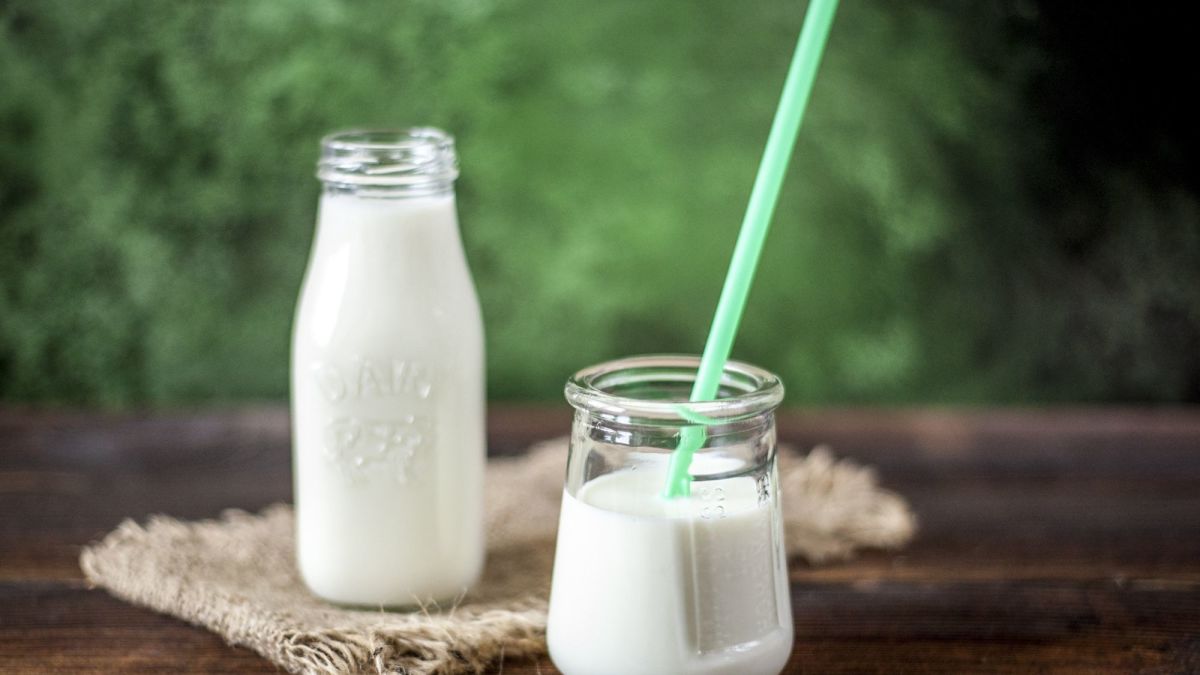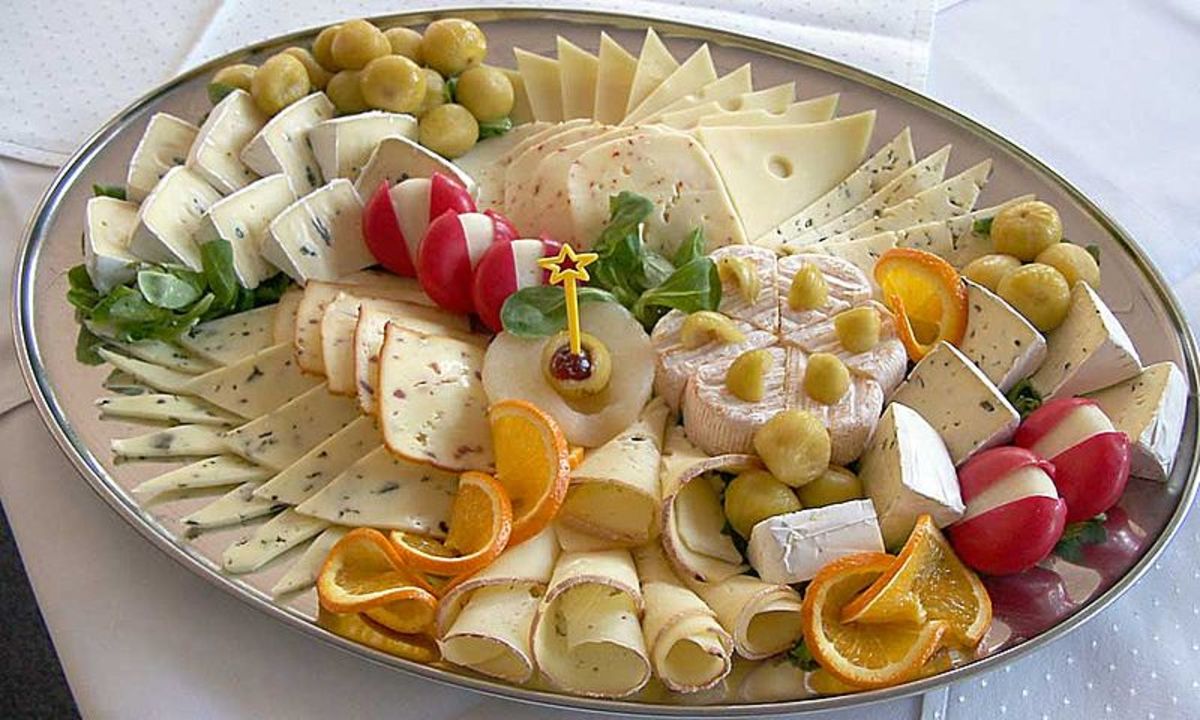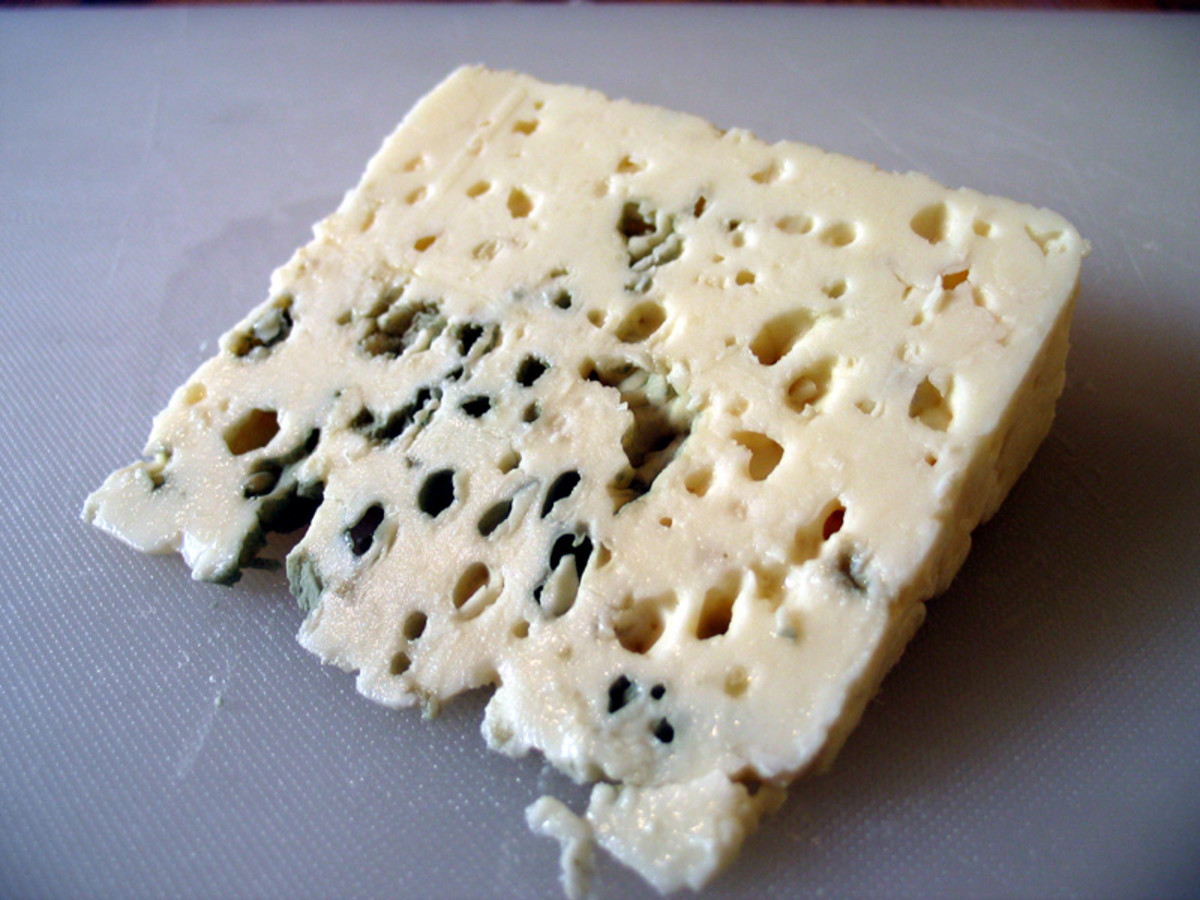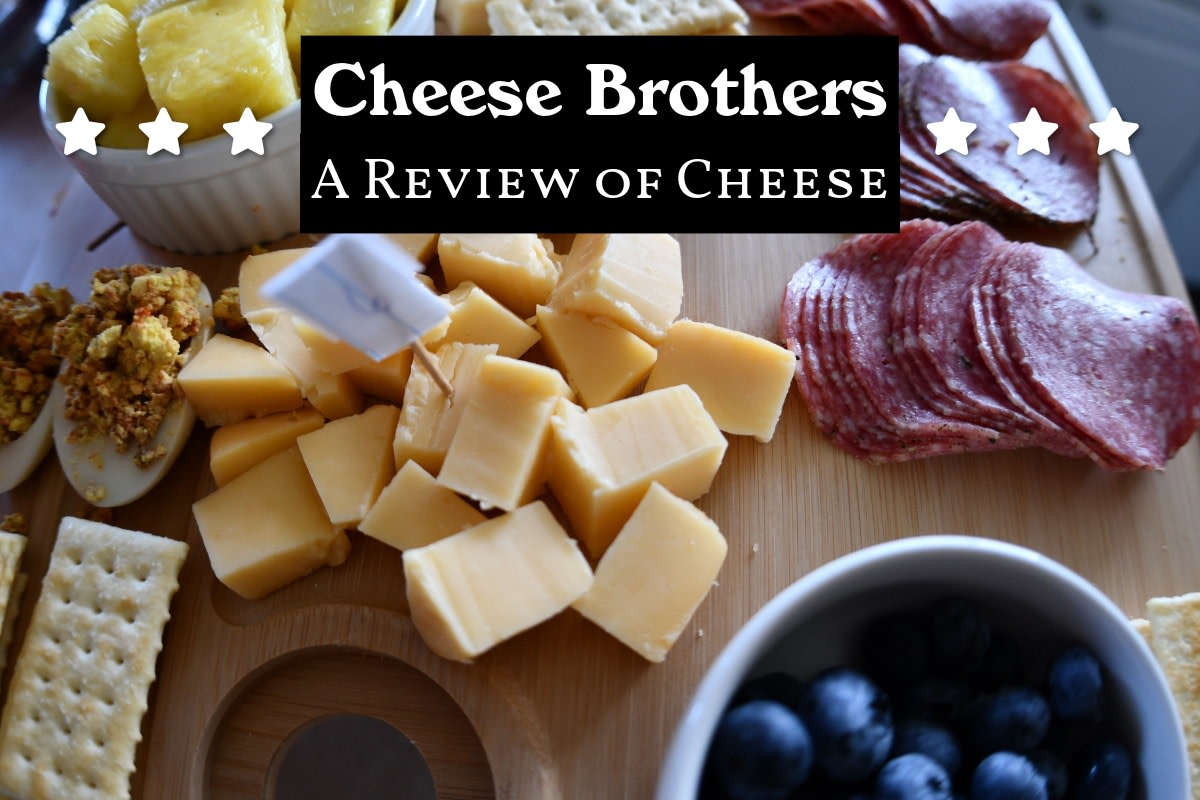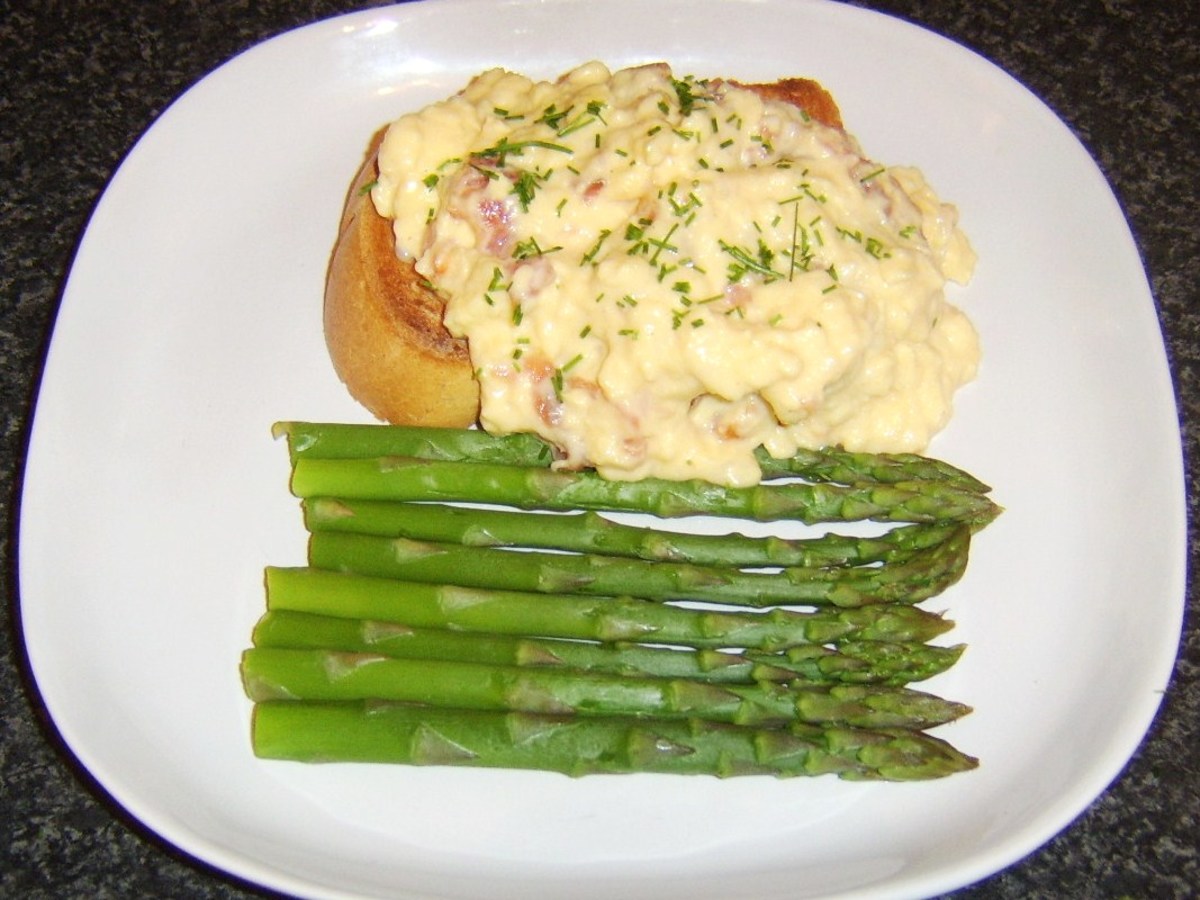Beyond Brie: French AOC Cheese From Cow's Milk
A Cheesemonger in France
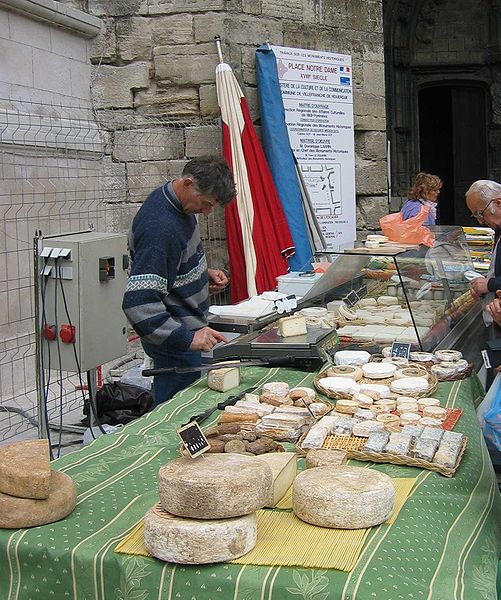
French Cheeses
The great French General Charles de Gaulle once famously remarked, "You cannot simply bring together a country that has over 265 kinds of cheese." In fact, France has over a thousand different kinds of cheeses, in every texture from soft to rock-hard, and every strength from mild to pungent. Although most people have experimented with Brie, all of these different and exquisite French cheeses offer a host of sensual experiences, and it is great fun to dive right in, and worth it to try each one!
Be aware that some of the strong cheeses are really, extremely pungent -- in a market in France, I was once quite literally knocked flat on my behind by the smell of one cheese without being prepared for it beforehand! (I got quite a few giggles from passers-by, too!)
Many French cheeses are marked AOC (Appellation d'Origine Controllée) that is, nobody can just call their cheese by a name if that name is similar to that of a protected one—cheeses with the AOC designation are strictly regulated as to ingredients and where the it is produced. So if you buy a French AOC designated cheese, you can be sure you are getting the real thing; the French government aggressively prosecutes cheese identity theft! Everything listed here has the AOC designation.
AOC Cheeses made from Cow's Milk
- Abondance - Since the 14th century, the monks at Sainte Marie d'Abondance in Abondance, France (near the Swiss border) have made this variety from the Abondance breed of cows. This cheese is fragrant and semi-hard, aged for 90 days, and is best from July to November.
- Abondance de Savoie - Made since 1896, this variety has a 12-week aging period, and is made only by a single commune. Abondance de Savoie is best in July through December, and is semi-hard and fragrant.
- Beaufort - Similar to the "Swiss" cheese, but with a sharper taste, and lacking the holes. Beaufort comes in three different varieties: summer, winter, and Alpine. Because Beaufort is made from milk from cows that have grazed in the Alps, the high altitude gives it a unique flavour. Beaufort is aged from six to twelve months and is made only from the Tarentaise or Abondance breeds of cattle.
- Bleu d'Auvergne - discovered in the 1850s in south central France by Antoine Roussel, who found that rye bread mould made a cheese with a softer taste than other bleu varieties, he injected the mould into his cheeses with needles. Aged for just four weeks, this bleu cheese is a much milder variety than most of the others in production.
- Bleu de Gex - made only from Montbéliard cattle, this variety is injected with penicillin mould and then is aged for three weeks to produce a soft, mild bleu cheese. Don't eat it if you are allergic to penicillin.
- Bleu de Causses - this bleu cheese is aged for 3-6 months in the limestone caves of Gorges du Tarn.
- Bleu de Vercors-Sassenage - made only from Montbéliard, Abondance or Villard cattle, this mild bleu cheese has been made since the 14th century in the Rhone-Alpes region of France.
- Brie de Meaux - made only in the departments of Seine-et-Marne, Loiret, Meuse, Aube, Marne, Haute-Marne and the Yonne, this soft, mild creamy variety has an aging period of 8-10 weeks and is best in the second half of the year. (Yes, the rind is edible!) This cheese has been famous since the 8th century!
- Brie de Melun - the Brie with which most people are familiar, is aged for only a week, because the organisms that produce the cheese will give off a faint ammonia smell, which strengthens as the organisms continue to grow. (However, if you let it go a very long time, you will get Brie Noir, which is very popular in France.)
- Camembert de Normandie - Invented in 1791 by Marie Hamel, with advice from a priest who originally hailed from Brie. The traditional thin wooden box for Camembert was invented by M. Ridel in 1890. Camembert de Normandie received its AOC status in 1983.
- Cantal - comes in both the unpasteurized and pasteurized varieties: Fermier is made from unpasteurized milk; Laitier is made from pasturized milk. The milk must come from the Salers breed of cows in the region of Cantal, in the Auvergne mountains, and only the winter milk is used (the summer milk makes Salers). Cantal comes in three different age groups: Cantal jeune (aged 1-2 months); Cantal entre-deux or Cantal doré (aged 2-6 months); and Cantal vieux (aged more than 6 months). If you eat Cantal Fermier, discard the rind as it may contain the listeria bacteria.
- Chaource - made only in the Aube and Yonne regions, chaource has been made since the Middle Ages. Chaource received AOC status in 1970. The rind contains penicillin, so do not eat chaource if you are allergic to penicillin.
- Comté - made since the 12th century in in the Jura region, from Montbéliard cattle, which must have at least a hectare of grazing for each cow and may be fed only fresh food. Comté has the largest production of any cheese in France, and must be aged at least four months; aging may continue for as long as two years. AOC regulations prohibit the sale of grated Comté.
- Époisses de Bourgogne - made since the early fifteenth century by a Cistercian commune, the monks left the secret to local farmers when the commune disbanded. This was the favourite cheese of Napoléon, and dubbed the "king of cheeses" by Brillant-Savarin. Hugely popular at the start of the twentieth century, the manufacture of this variety almost died out after World War II, when it was fortunately revived by M. Berthaut in 1956.
- Fourme d'Ambert - a cheese that dates back to Roman antiquity. A carving of this cheese can be found in the chapel of La Chaulme (Auvergne, France). Originally protected by the same AOC as Fourme de Montbrison, each received its own protected status in 2002. The cheese contains penicillin, so don't eat this cheese if you have allergies to penicillin.
- Fourme de Montbrison - may or may not be pasteurized. Aged for a minimum of four weeks, often longer. Similar to Fourme d'Ambert. Artisanal producers use unpasteurized milk; commercial production uses pasteurized milk.
- Laguiole - made from raw, unpasteurized French Simmental or Aubrac cow's milk collected between May and October at more than 800m altitude, this AOC cheese is aged from six months to a year, and dates back to the 19th century.
- Langres - made in the same region that produces Champagne, the indentation at the top is, in fact, often used to hold a little champagne! Langres has been made since the eighteenth century and is washed with annatto and champagne during the ripening process. It is matured for fifteen days to a month for the petit form, and 2-3 months for the larger form.
- Livarot - this is one smelly cheese (think of the way a farm smells and you'll get the idea!). Coming from Normandie, where it is one of the oldest varieties in the region, in the nineteenth century it was hugely popular. You can identify Livarot because it is covered with five bands of raffia, giving it a striped appearance, and so is called the "colonel," because it resembles the stripes on a colonel's uniform. Livarot has been made since the end of the Middle Ages.
- Maroilles - First produced in the year 962 by a monk, Maroilles can be sold in only four sizes to conform to AOC regulations: 13 cm square and 6 cm in height, weighing around 700 g; Sorbais - (3/4) 12-12.5 cm square, 4 cm high, 550 g in weight, and the maturation period for this size is at least 4 weeks; Mignon - (1/2) 11-11.5 cm square, 3 cm high, 350 g in weight with a maturation period of at least 3 weeks; Quart - (1/4) 8-8.5 cm square, 3 cm high, 180 g in weight, with a maturation of at least 2 weeks. This cheese was a favourite of Philip II, Louis IX, Charles VI and Francis I, and comes in both pasteurized (industriel) and unpasteurized (fermier) varieties.
- Morbier - made in Morbier in Franche-Comté, Morbier cheese has a thin layer of ash separating two layers of cheese; this tradition has to do with the milking cycle, in that the evening milking produces less milk than the morning milking, so that the evening milking would be placed on the bottom, covered with a thin layer of ash to protect it, and topped off with milk from the morning milking.
- Munster-géromé - Made in the Vosges region since the 7th century, this strong-tasting cheese is nothing like the version sold in the U.S.A., not even the rind colour!
- Neufchâtel - More similar to Camembert than to the Neufchâtel sold in the U.S.A., this cheese dates back to the sixth century and is usually made in a heart-shaped mould. It is similar to Camembert but saltier and sharper-tasting. Maturation is usually eight to ten weeks.
- Pont-l'Évêque - made in Normandie since the twelfth century, and formerly called angelot, Pont-l'Évêque has been popular since the Renaissance. This strong-smelling cheese is sold in three varieties: Petit - 8.5-9.5cm² ; Demi - 10.5-11.5cm by 5.2-5.7cm; and Grand - 19-21cm².
Pont l'Evêque
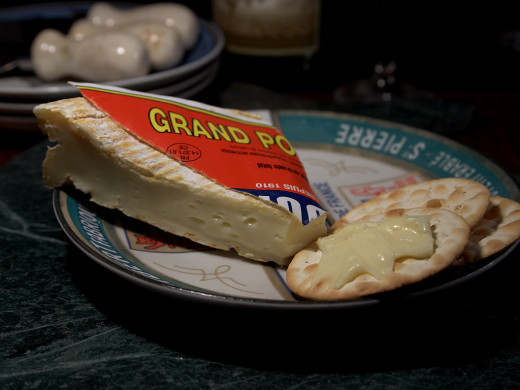
- Reblochon - produced from the cattle breeds Abondance, Tarentaise and Montbéliarde, the name comes from the fact that in the fourteenth century, cattle breeders paid taxes by the amount of milk their cows produced, so they held back some of the milk (inside the cow) until the yield had been measured. Reblochon has a mild nutty taste and is made solely from unpasteurized milk.
- Saint-Nectaire - made in Auvergne since the seventeenth century, and was served at the table of Louis XIV. The Marshal of Sennecterre (a mangling of Saint-Nectaire) was also responsible for introducing Cantal and Salers as well. The cheese is aged for around eight weeks, and has a mild taste similar to Reblochon. The milk is from the Holstein, Montbéliarde, and sometimes Salers cows.
- Salers - the summer version of Cantal, made from unpasteurized Salers cow's milk between the 15th of April and the 15th of November, when the cows are fed on fresh grass. This variety is aged for nine months, and has been made for at least two thousand years.
- Tome des Bauges - Made from unpasteurized milk from the Abondance, Tarine or Montbéliarde breeds, where at least fifty per cent of the herd is made up of the first two breeds, fed on pasture grass during the summer and hay during the winter, this cheese is matured for five weeks. Its original date of manufacture is unknown, but has been documented for at least several centuries. This region near the Jura is a limestone massif and has pasture even at high altitudes, and the geography, climate and regional plants play a large part in the taste of this cheese.
- Vacherin Mont d'Or - Made from unpasteurized milk produced between August 15 and March 15, and sold between September 10 and May 10, this variety is sold in a thin spruce box, and is often warmed in its box and eaten like fondue.
This content is accurate and true to the best of the author’s knowledge and is not meant to substitute for formal and individualized advice from a qualified professional.
© 2010 classicalgeek

